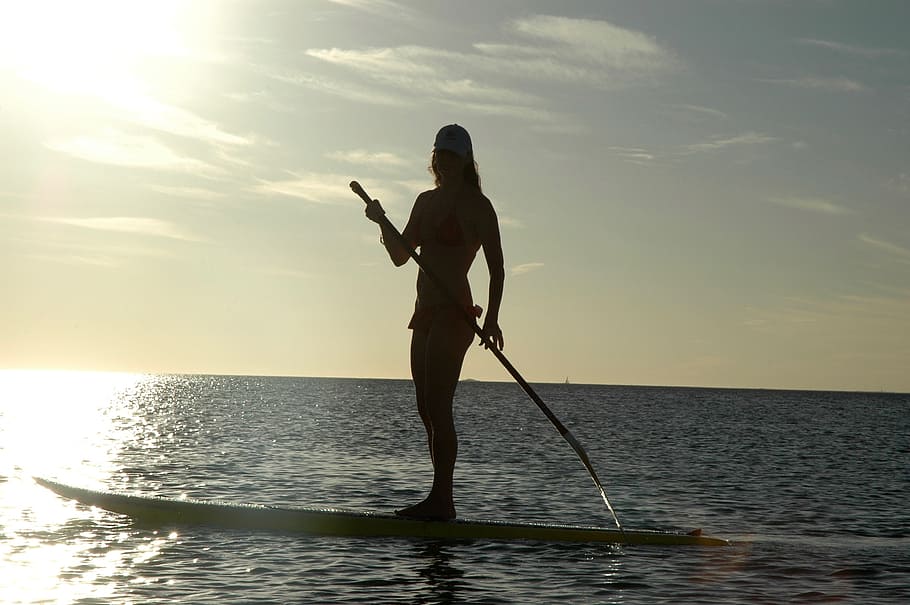
When it comes to paddleboarding, choosing the right board is crucial for enjoying your time on the water. One key decision you’ll need to make is whether to opt for an inflatable (iSUP) or a solid (rigid) paddleboard. Both types have their advantages and disadvantages, and the best choice for you will depend on the specific water sport or activity you’re interested in, for example you may be interested in paddleboard exercises for enhancing athletic performance. In this article, we’ll evaluate inflatable paddleboards against solid boards for various water sports, helping you make an informed choice that suits your needs. So, let’s dive in!
Recreational Paddling
Recreational paddling is the most common type of paddleboarding, involving leisurely paddles on calm waters such as lakes, rivers, and sheltered bays. In this scenario, both inflatable and solid paddleboards can perform well.
Inflatable paddleboards are a popular choice for recreational paddling due to their lightweight construction, making them easy to manoeuvre on the water. They’re also extremely portable and can be easily transported to your favourite paddling spot.
Solid paddleboards offer more rigidity and stability, which can be beneficial for beginners learning the ropes. However, their bulkier size may make them more challenging to transport and store.
Verdict: Both types of paddleboards are suitable for recreational paddling, with inflatable boards offering more portability and solid boards providing greater stability.
SUP Yoga and Fitness
SUP yoga and fitness activities require a stable platform to perform exercises and maintain balance. In this case, the choice between inflatable and solid paddleboards comes down to personal preference and practical considerations.
Inflatable paddleboards offer a slightly softer surface, which some people find more comfortable for yoga and fitness exercises. They’re also easier to transport and store, making them a convenient choice for those who need to bring their board to different locations.
Solid paddleboards generally provide a more stable and rigid platform, which can be advantageous for maintaining balance during challenging yoga poses or fitness exercises.
Verdict: Both inflatable and solid paddleboards can work well for SUP yoga and fitness, with the final decision depending on your preference for stability and comfort.
SUP Surfing
When it comes to SUP surfing, the performance and manoeuvrability of the board are key factors. In this case, solid paddleboards tend to have the edge over their inflatable counterparts.
Inflatable paddleboards can be used for SUP surfing, but they generally lack the responsiveness and manoeuvrability needed for more advanced surfers or challenging conditions.
Solid paddleboards offer better performance in the surf, with their rigid construction and refined shapes allowing for quicker turns and better wave-riding capabilities.
Verdict: Solid paddleboards are generally the better choice for SUP surfing, offering superior performance and manoeuvrability.
SUP Touring and Racing
For long-distance touring and racing, paddleboard performance, speed, and efficiency are crucial factors. In this case, solid paddleboards are typically the preferred choice.
Inflatable paddleboards can be used for SUP touring and racing, but they often lack the speed and efficiency of solid boards. However, their portability and ease of transport can make them a convenient choice for casual touring or shorter races.
Solid paddleboards excel in SUP touring and racing, with their rigid construction and streamlined shapes allowing for better glide and higher speeds.
Verdict: Solid paddleboards are the better choice for SUP touring and racing, offering superior performance and speed.
Conclusion
When evaluating inflatable paddleboards against solid boards for various water sports, it’s essential to consider the specific activity, your skill level, and personal preferences. In general, inflatable paddleboards offer greater portability and convenience, making them a popular choice for recreational paddling, SUP yoga, and fitness activities. On the other hand, solid paddleboards typically provide better performance, stability, and manoeuvrability, making them the preferred option for SUP surfing, touring, and racing.
Ultimately, the best paddleboard for you will depend on your individual needs, preferences, and the type of water sports you plan to engage in. To explore a wide range of high-quality inflatable and solid paddleboards, be sure to check out Rock and Mountain’s extensive paddleboard selection.
And for more insights, tips, and advice on paddleboarding and other water sports, don’t forget to visit the Rock and Mountain blog to stay up to date on the latest trends, innovations, and developments in the world of paddleboarding.
By carefully considering your specific requirements and the activities you plan to undertake, you can make an informed decision and choose the perfect board to enhance your paddleboarding experience. Happy paddling!

